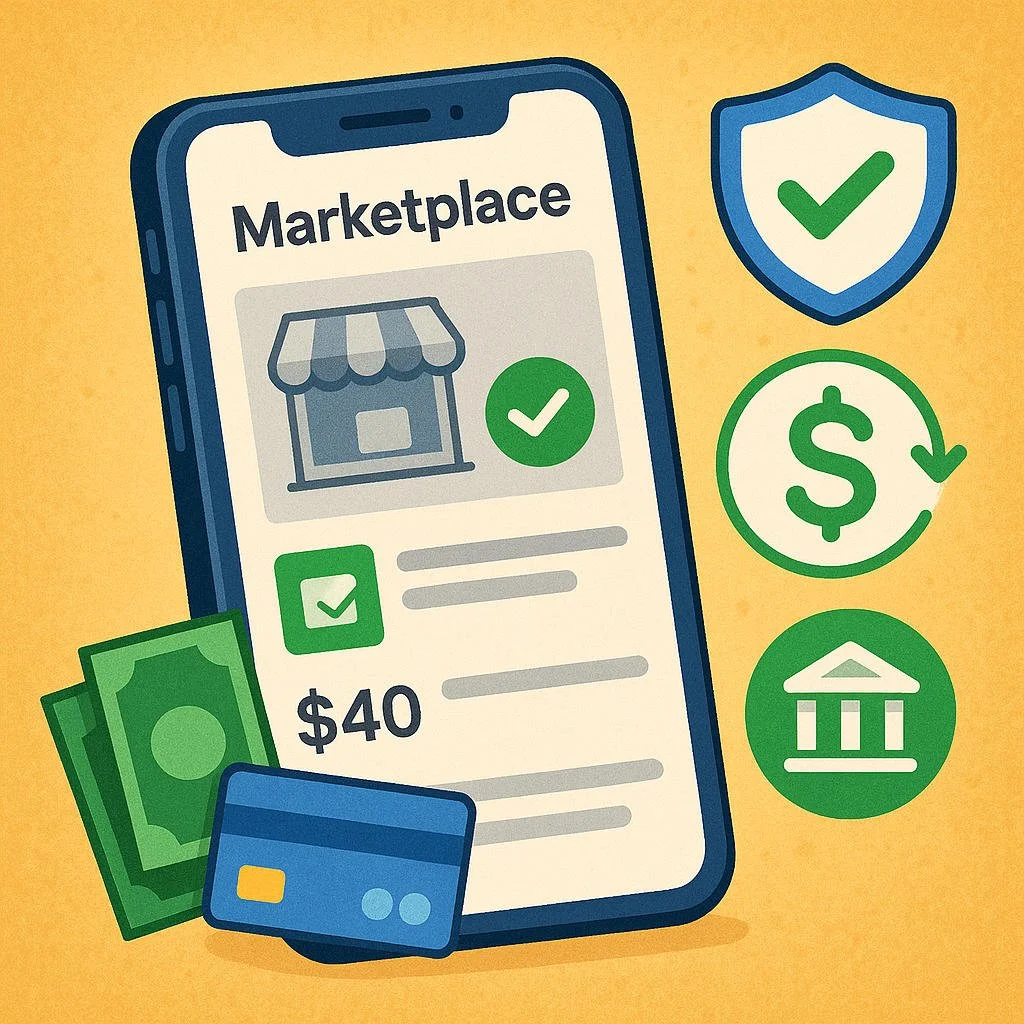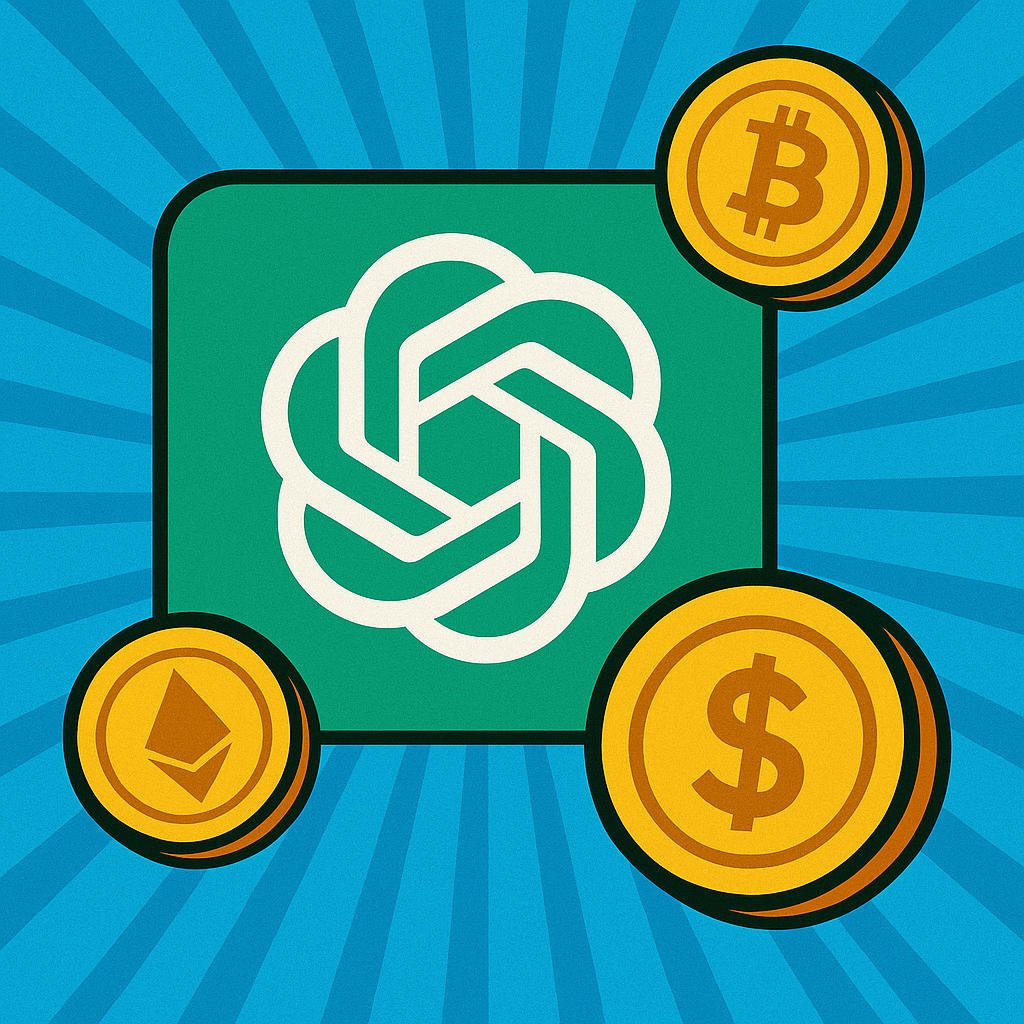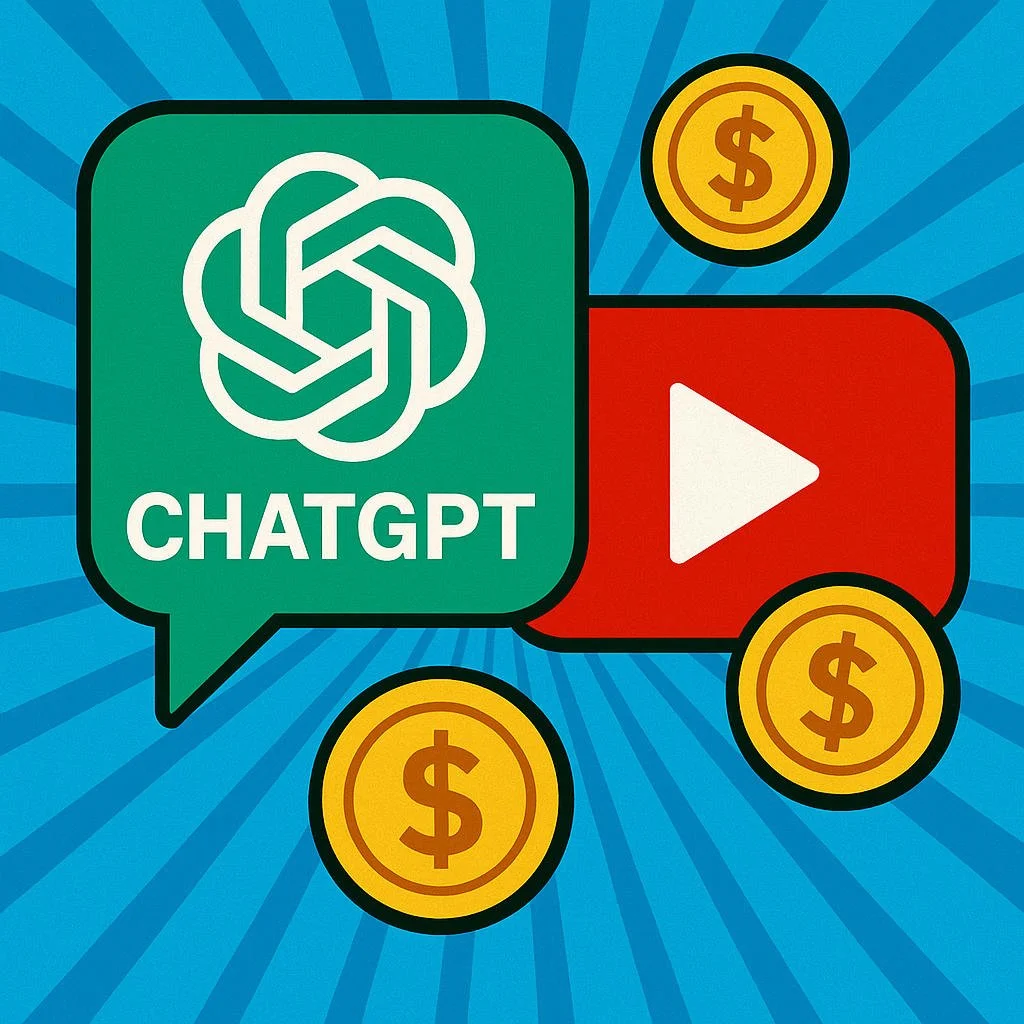How to Receive Payments on Facebook Marketplace (Safely and Correctly)
First: Two different ways people use Facebook Marketplace
Before you decide how to get paid, you need to know which type of listing you’re using:
Local pick-up listings
You and the buyer meet in person.
You arrange payment methods yourselves (cash, e-Transfer, PayPal, etc.).
Facebook does not automatically handle the money.
Shipped item listings (where available)
Buyer pays through Facebook checkout.
You ship the item with tracking.
Facebook releases the payment to you after delivery or after a set time, minus any fees.
Most casual Marketplace deals are still local pick-up, so you’re usually responsible for choosing how you get paid and keeping it safe.
Common ways to receive payments (local deals)
Here are the main options and how to use them safely:
1. Cash (simple and still very common)
How it works:
Buyer shows up, you show the item, they pay cash, you hand over the item.
Best practices:
Meet in a public place (coffee shop, mall, police station parking lot if available).
For more expensive items, count the money in front of the buyer.
Have the price clearly agreed in messages beforehand.
Avoid large late-night meetings in sketchy places.
Pros:
Instant payment, no fees.
No need to share bank or app info.
Cons:
No protection if bills are fake.
Not ideal for very high amounts of money.
2. Interac e-Transfer (for Canada)
How it works:
Buyer sends an e-Transfer to your email or phone number.
You get a notification from your bank.
You accept the transfer; once it’s marked “deposited” or “completed”, you hand over the item.
Best practices:
Do not hand over the item until the e-Transfer is fully deposited, not just “pending.”
Watch out for fake “e-Transfer” emails that don’t match your actual banking app. Always confirm inside your banking app directly.
For auto-deposit, make sure you’ve actually configured it with your bank, not just relied on an email claim from the buyer.
Pros:
No cash to carry.
Very common in Canada and straightforward once deposited.
Cons:
Scams via fake e-Transfer emails.
If you accept “pending” as proof, you can be left with nothing.
3. PayPal (for some categories)
There are two main ways you’ll see PayPal used:
PayPal Friends & Family (not recommended for strangers)
PayPal Goods & Services (includes some buyer/seller protections but has fees)
How to use it:
Agree on who pays the fee (you, the buyer, or split).
Give the buyer your PayPal email.
Have them send the payment and show you that it’s completed, not “pending review.”
Check your PayPal account directly (not just screenshots) before giving the item.
Pros:
Useful for remote buyers.
Goods & Services can provide some protection if used correctly.
Cons:
Fees for Goods & Services.
Chargeback risk, especially if you don’t have proof of delivery.
Friends & Family has almost no protection and is often used in scams.
4. Other payment apps (Cash App, Venmo, etc.)
Depending on your country, buyers may ask to use:
Venmo
Cash App
Zelle (US)
Other local apps
General rule:
Treat these like e-Transfer/PayPal: do not hand over the item until the payment shows as completed in your actual app, not just in a screenshot.
Watch out for:
“I’ll send you a screenshot later.”
“I paid, you just need to upgrade your account and pay a ‘release fee’.”
These are classic scam lines—ignore and block.
Using Facebook’s own checkout system (shipped items)
In some regions and categories, Facebook lets buyers check out directly with “Buy now” or similar buttons and pay through Facebook.
How it works (simplified):
You create a listing and enable shipping if it’s available for that item and region.
A buyer taps Buy and pays through Facebook/Meta.
You get a notification with the buyer’s shipping address and a time window to ship.
You pack the item and ship it with tracking using the required method.
You mark the item as shipped and enter the tracking number.
Once the package is delivered (and after any waiting period), Facebook releases your payout to your chosen payout method (like a bank account), minus any fees.
Requirements often include:
A connected payment account or bank details in your Facebook/Meta settings.
Agreement to Facebook’s seller policies for shipping and returns.
Pros:
Buyer can feel safer paying through a “platform.”
Payments are tracked inside your Marketplace account.
Less pressure to arrange in-person meetings.
Cons:
Not available for everything, everywhere.
Fees may apply.
You must ship on time and keep tracking, or payouts could be delayed or disputes opened.
Step-by-step: setting up to receive payments (general checklist)
Even if you mainly do local deals, having options ready makes sales smoother.
1. Decide which payment methods you accept
Common combo:
Cash (for local meetups)
Interac e-Transfer / PayPal / other app (for people who don’t want to carry cash)
Facebook checkout (if you’re doing shipped items and have access to it)
Make sure you’re comfortable and confident using each method.
2. Make your accepted payment methods clear in your listing or chat
You don’t need to write a long paragraph. Try:
“Payment: cash or e-Transfer only.”
“Local pick-up, cash preferred.”
“Shipping available – payment via [method].”
Then, when a buyer messages you, repeat the basics in the chat:
“Cool, I can hold it for you today. I accept cash or e-Transfer on pick-up.”
3. Confirm details before meeting
In chat, confirm:
Exact price (including any negotiated discount).
Meet location and time.
Payment method (cash, e-Transfer, etc.).
Example message:
“Just to confirm: today 6:30 pm at [location], $60, cash. I’ll bring the [item].”
This avoids awkward “But I thought…” conversations later.
4. When you meet in person
Show the item and let them inspect it briefly.
Take payment before handing it over.
If they’re paying digitally, watch them send it and check your app for completed status.
Once paid, hand them the item.
Optionally, you can send a quick message on Marketplace: “Thanks! Item picked up and paid.”
5. For shipped items with Facebook checkout
If you have access:
Set up your payout method in your Facebook/Meta account settings (bank or other method they support).
When you list an item, enable shipping and set your shipping fee or options.
When it sells, carefully follow the instructions: pack the item securely, ship on time, and enter the tracking number.
Monitor the shipping status and your payouts section for when funds are released.
Always keep:
Photos of the item before shipping
Proof of shipping and tracking
Any conversation with the buyer (just in case of disputes)
Scam patterns to watch for when receiving payments
Unfortunately, Marketplace attracts scammers. Here are common red flags:
Overpayment scams
Buyer sends more than the agreed price and asks you to send the difference back.
Often involves fake payment confirmations.
Solution: never accept “overpayments” or send money back to fix their “mistake.”
Fake payment emails
Email claiming “PayPal/Facebook/your bank” has received funds, but it’s actually fake.
Solution: always verify inside the official app or website, not via emails or screenshots.
“Shipping company” scams
Buyer says they’ll pay a third-party “courier” who needs your personal info or upfront fees.
Solution: you choose the shipping method. No strange couriers or extra fees.
“I sent you extra, you must upgrade your account”
Message claiming you must send money to unlock the payment.
Solution: nobody legitimate asks you to pay to receive payment.
If something feels off or too complicated for a simple item sale, back out. You’re never obligated to complete a sketchy deal.
Tips to stay safe while getting paid
Meet in public, well-lit places. Some police stations even have designated “safe exchange zones.”
Bring a friend if the deal is high-value.
Trust your gut. If the buyer is acting weird, aggressive, or keeps changing the story, walk away.
Keep conversation inside Facebook Messenger when possible so there’s a record.
Don’t share more personal info than needed. They don’t need your full home address for local pick-up.
Quick FAQ
Q: Should I take deposits to “hold” an item?
A: You can, but be clear: “Non-refundable deposit of $X by [method] holds it until [date/time].” Otherwise, only mark “Sold” once you’re actually paid.
Q: Can I be paid in cryptocurrency?
A: In theory, yes, if both sides agree—but it adds complexity, volatility, and scam potential. For most people, it’s better to stick with cash or mainstream payment apps.
Q: What if a buyer asks to send me a shipping label?
A: That can be legit in some cases, but it’s also used in scams. If you’re not 100% sure, decline and offer to handle shipping yourself.
Simple template messages you can copy
To confirm payment method and meetup:
“Great, it’s still available. I can meet today at [time/place]. Price is $[amount]. I accept cash or e-Transfer. What works for you?”
To confirm payment received (digital):
“Just got the e-Transfer, thanks. See you at [place/time] for pick-up.”
To decline a sketchy payment idea:
“I only accept cash or [your app] for Marketplace. I’m not comfortable with other methods.”
Bottom line
Receiving payments on Facebook Marketplace safely comes down to a few simple rules:
Decide which payment methods you’ll accept.
Make them clear up front in chat.
Only hand over items after you see the money in your account or in your hand.
Avoid overcomplicated payment stories and anyone who pressures you.
Stick to straightforward methods, trust your instincts, and you can sell confidently without getting burned.







